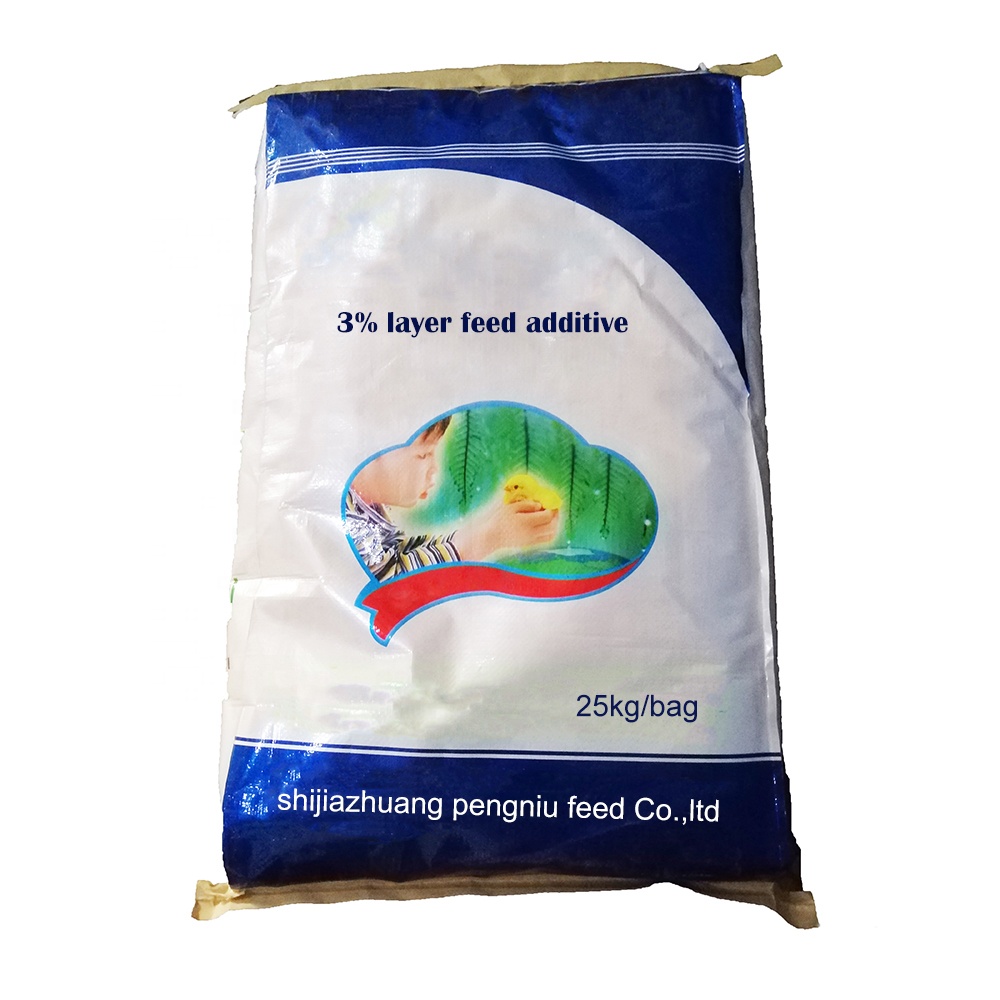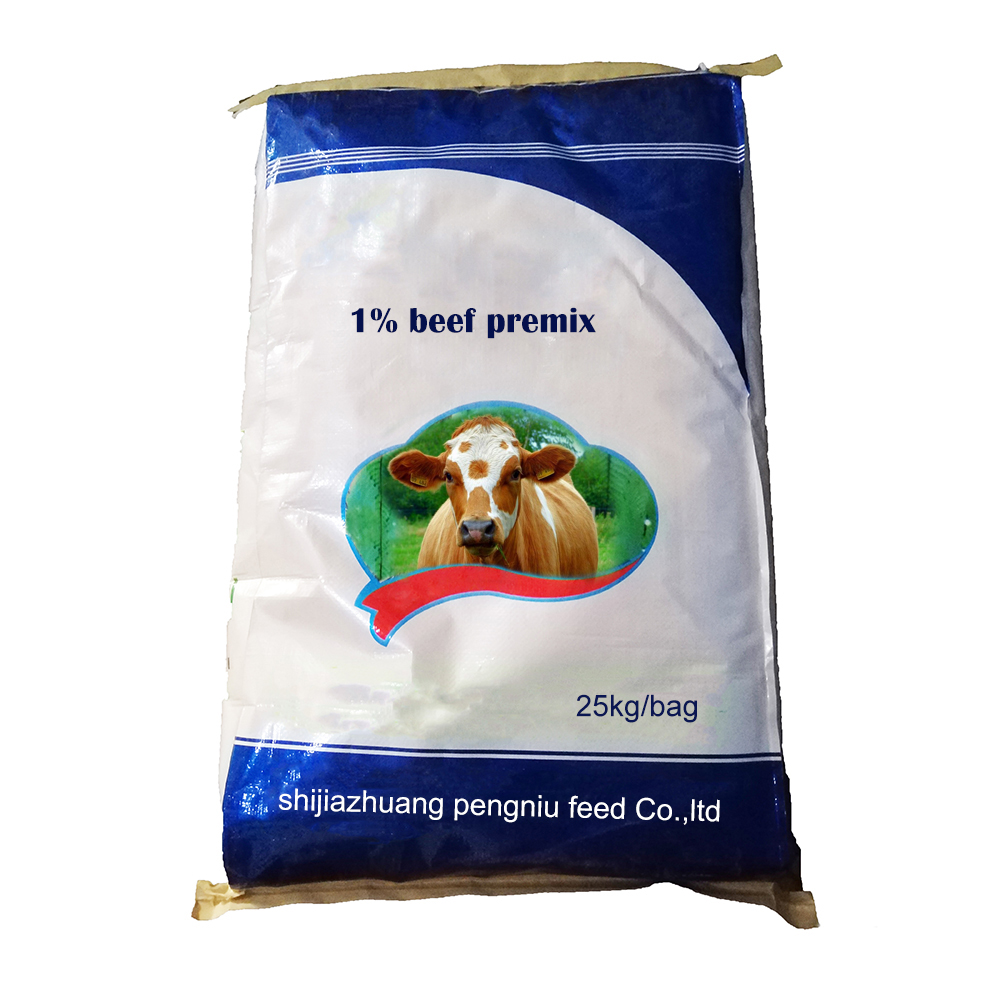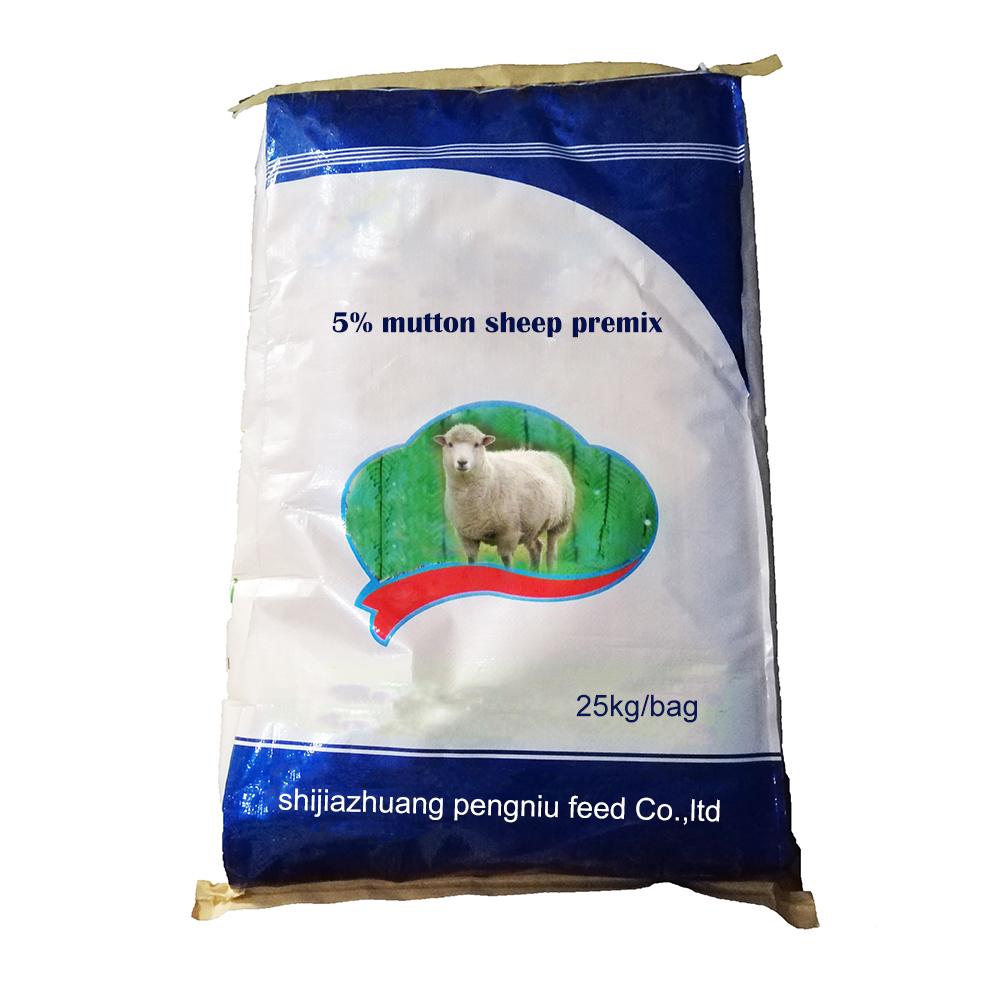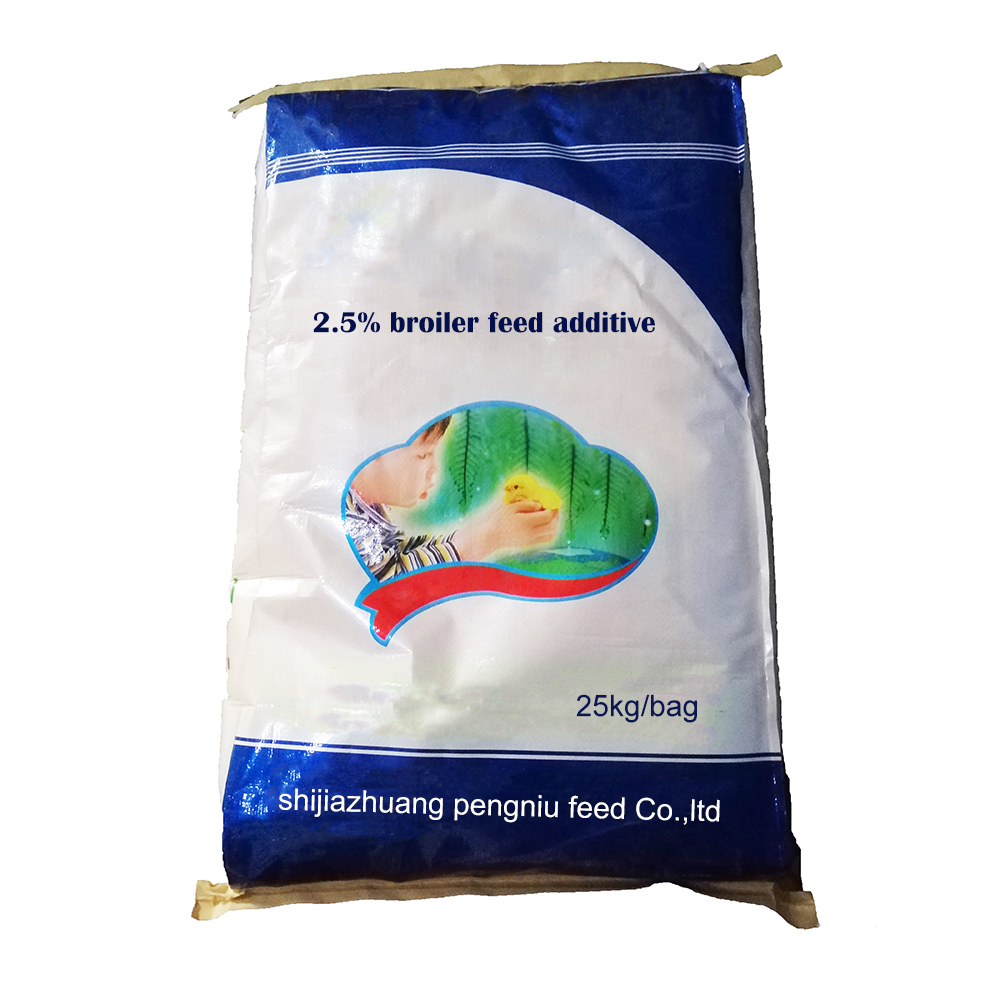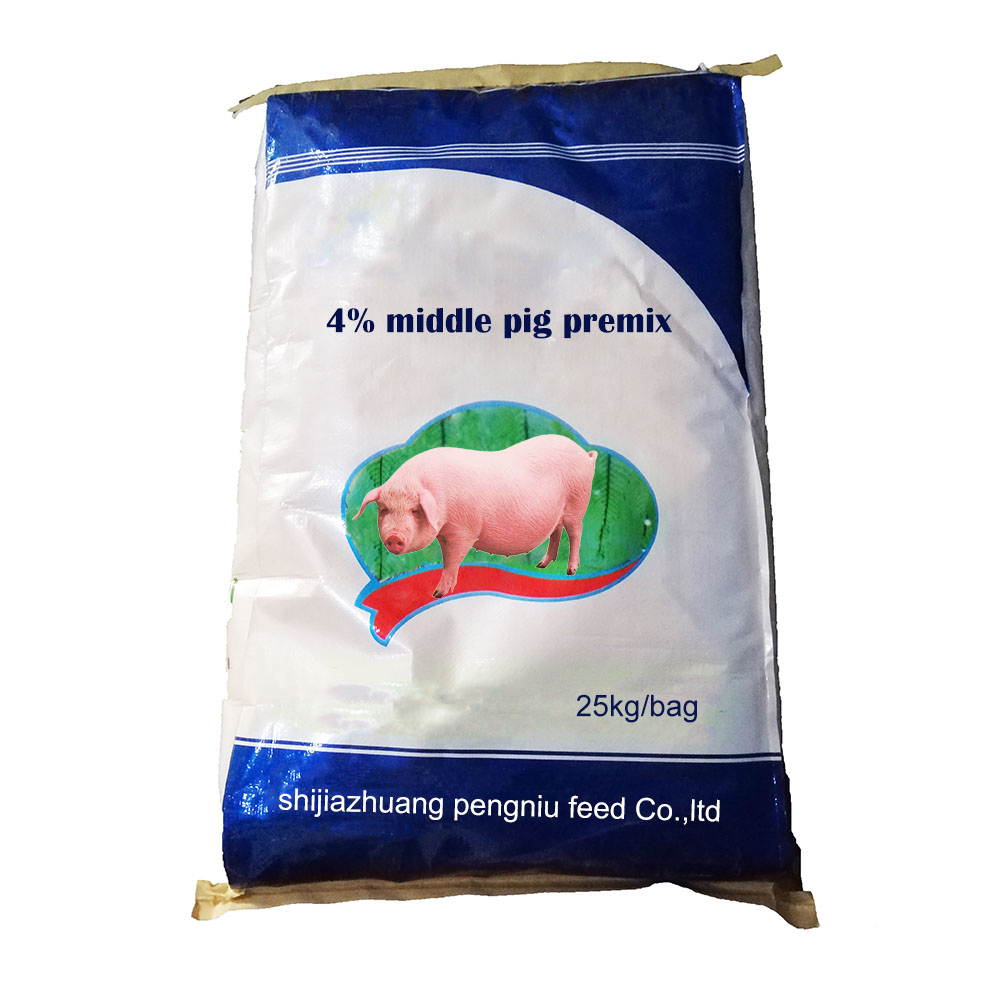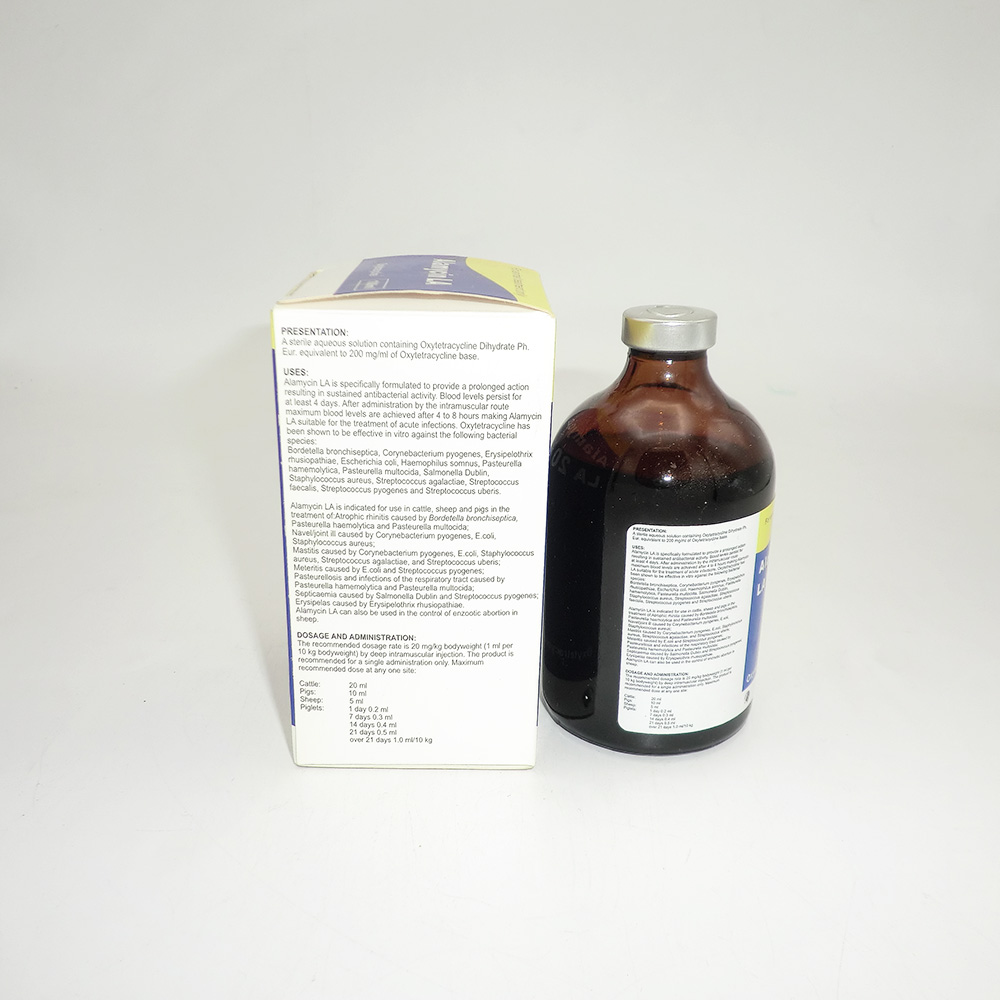The Pivotal Role of Broiler Premix Formulas in Modern Poultry Production
In the intricate landscape of modern poultry farming, achieving optimal growth, health, and economic efficiency hinges significantly on precision nutrition. At the core of this precision lies the broiler premix formula – a concentrated blend of essential micro-ingredients designed to meet the specific physiological demands of fast-growing broilers. This article delves into the critical aspects of these formulations, from their technical specifications and manufacturing processes to their profound impact on industry trends and bottom-line performance for B2B decision-makers and nutritionists.
Effective feed management, powered by advanced premix solutions, is vital for mitigating production costs, improving feed conversion ratios (FCR), and ensuring the welfare and uniformity of broiler flocks. We will explore the latest innovations, application scenarios, and the rigorous quality standards that define leading premix offerings, providing a comprehensive guide for optimizing broiler nutrition strategies.
Current Industry Trends in Broiler Nutrition and Feed Premix Formulation
The global poultry industry is undergoing rapid transformation, driven by consumer demand for healthier, sustainably produced meat, alongside increasing pressure to reduce antibiotic usage. These trends profoundly influence feed premix formulation strategies:
- Antibiotic-Free (ABF) Production: A major shift towards natural growth promoters, probiotics, prebiotics, organic acids, and phytogenics within the broiler premix formula to support gut health and immunity, reducing reliance on antimicrobial growth promoters (AGPs).
- Precision Nutrition: Advancements in genetic selection lead to broilers with higher growth potential and specific nutritional requirements. Premixes are becoming increasingly tailored to genetic lines, environmental conditions, and specific growth phases (starter, grower, finisher).
- Sustainability and Resource Efficiency: Focus on ingredients that improve nutrient utilization and digestibility, such as enzymes (e.g., phytase, xylanase, protease), to reduce feed costs, minimize environmental impact (less nutrient excretion), and enhance overall sustainability.
- Gut Health Optimization: Recognizing the gut as the primary site for nutrient absorption and immune function, modern premixes prioritize ingredients that maintain gut integrity, balance the gut microbiota, and protect against enteric pathogens.
- Data-Driven Formulation: Leveraging big data analytics, AI, and advanced modeling to predict performance, optimize ingredient ratios, and adapt formulations in real-time based on feedstuff analysis and flock performance data.
These trends necessitate a dynamic approach to premix development, requiring deep technical expertise and continuous innovation to deliver solutions that are both effective and economically viable for poultry producers.
Technical Specifications of a High-Quality Broiler Premix Formula
A robust broiler premix formula is a complex matrix of essential micronutrients and additives, each playing a critical role in broiler health and performance. Key components and their functions include:
- Vitaminer: Including fat-soluble (A, D3, E, K) and water-soluble (B-complex, C). These are vital for metabolic processes, immune response, bone development, and antioxidant protection. For example, Vitamin E acts as a potent antioxidant, while Vitamin D3 is crucial for calcium and phosphorus metabolism.
- Trace Minerals: Such as Zinc (Zn), Copper (Cu), Iron (Fe), Manganese (Mn), Selenium (Se), and Iodine (I). Often provided in highly bioavailable chelated forms to ensure optimal absorption and utilization for enzyme systems, bone strength, feather quality, and immunity.
- Amino Acids: While major amino acids (Lysine, Methionine, Threonine) are typically added directly to the feed, premixes can contain specialized amino acid sources or precursors for precise balancing, especially in low-protein diets.
- Enzymes: Phytase (improves phosphorus availability), xylanase (digests non-starch polysaccharides), and proteases (enhances protein digestibility) are standard to improve nutrient utilization from plant-based feedstuffs.
- Gut Health Modulators: Probiotics (e.g., *Bacillus* species), prebiotics (e.g., FOS, MOS), organic acids (e.g., formic, lactic acid), and botanicals/phytogenics to support a healthy gut microbiome and reduce pathogen load.
- Antioxidants: Ethoxyquin or natural alternatives like Vitamin E and C, and selenium, to protect feed ingredients and animal tissues from oxidative damage.
- Mycotoxin Binders: Clays (e.g., bentonite, aluminosilicates), yeast cell wall extracts, or activated charcoal to sequester and reduce the absorption of harmful mycotoxins from contaminated feed.
Typical Broiler Premix Key Specifications (Per Ton of Finished Feed)
| Ingredient Category | Specific Nutrient/Additive | Typical Concentration Range | Key Function |
|---|---|---|---|
| Vitamins | Vitamin A | 10,000 - 12,000 IU | Vision, Immunity, Epithelial Integrity |
| Vitamin D3 | 3,000 - 4,000 IU | Bone Health, Calcium/Phosphorus Metabolism | |
| Vitamin E | 50 - 80 mg | Antioxidant, Immune Function | |
| Trace Minerals | Zinc (Chelated) | 80 - 100 mg | Enzyme Activity, Immunity, Skin/Feather Quality |
| Copper (Chelated) | 10 - 15 mg | Bone Formation, Red Blood Cell Production | |
| Selenium (Organic) | 0.3 - 0.5 mg | Antioxidant, Immune Response | |
| Enzymer | Phytase | 500 - 1,000 FTU | Improves Phosphorus Digestibility |
| Gut Modulators | Probiotics (e.g., *Bacillus subtilis*) | 1x109 CFU | Gut Microbiota Balance, Pathogen Exclusion |
| Other Additives | Antioxidant Blend | Custom (e.g., 100-200 ppm Ethoxyquin) | Preserves Feed Freshness and Nutrient Integrity |
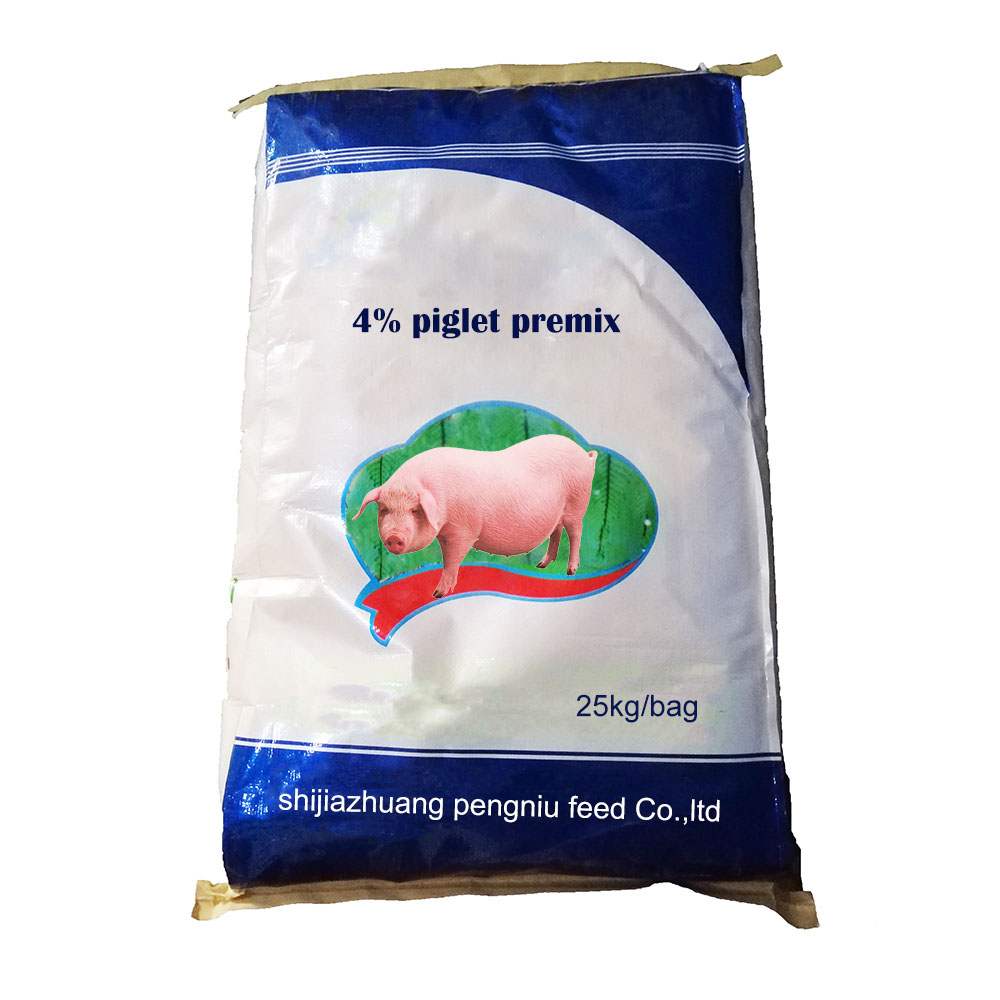
Image: High-quality feed premix illustrating the precision and care in formulation.
Detailed Manufacturing Process Flow of Broiler Premix Formula
The production of a high-quality broiler premix formula is a meticulously controlled process, ensuring homogeneity, stability, and bioavailability of all ingredients. Our manufacturing process follows stringent protocols:
1. Raw Material Sourcing & QC
Product Materials: Sourcing high-grade vitamins, chelated minerals, enzymes, and specialized additives from certified global suppliers. Each batch is accompanied by Certificates of Analysis (CoA).
Testing Standards: Incoming raw materials undergo rigorous quality control, including identification, purity assays (e.g., HPLC for vitamins, AAS for minerals), microbial load testing, and screening for contaminants (e.g., heavy metals, mycotoxins) adhering to ISO 9001 and GMP+ standards.
2. Precision Weighing & Micro-Dosing
Small quantities of potent ingredients are accurately weighed using highly sensitive digital scales and automated micro-dosing systems. This precision is critical, as even minute variations can impact the final feed's nutritional profile and efficacy. This process minimizes human error and ensures exact formulation adherence.
3. Multi-Stage Mixing & Blending
Manufacturing Processes: Ingredients are introduced in a specific order into high-precision horizontal ribbon or paddle mixers. A typical process involves pre-mixing smaller components with carriers (e.g., calcium carbonate, rice hulls) before blending into the main batch. This ensures a homogenous distribution, preventing segregation of micronutrients. Mixing times and speeds are carefully controlled to optimize blend uniformity.
4. Packaging & Final QA
The finished premix is packaged into multi-layered, moisture-proof bags (e.g., PE-lined kraft paper bags) to maintain stability and extend service life. Each batch undergoes final analytical testing for nutrient content verification, physical characteristics (flowability, particle size), and microbial safety. This adherence to ISO 22000 ensures product integrity until point of use.
Target Industries: Primarily the commercial poultry farming sector, including integrated broiler operations, independent farms, and feed mills.
Typical Application Scenarios & Advantages: The meticulous process ensures consistent delivery of vital nutrients, leading to advantages such as improved feed conversion ratios, enhanced broiler immunity, reduced incidence of metabolic disorders, and consistent growth rates. This contributes to energy saving through optimized nutrient absorption and potential corrosion resistance if highly reactive mineral forms are properly handled/chelated during formulation.
Application Scenarios and Technical Advantages
The strategic application of a well-formulated broiler premix formula yields a multitude of technical and economic advantages across various production stages and challenges:
- Phase-Specific Nutrition: Different premixes are formulated for broiler starter (0-10 days), grower (11-25 days), and finisher (26 days to market) phases. Starter premixes emphasize high immunity and rapid initial growth; grower premixes focus on lean muscle development; and finisher premixes optimize meat quality and FCR. This phased approach maximizes genetic potential at each stage.
- Enhanced Growth Performance: By precisely balancing vitamins, minerals, and enzymes, the premix optimizes nutrient absorption and metabolic pathways, leading to superior Average Daily Gain (ADG) and improved Feed Conversion Ratio (FCR). A 2-5% improvement in FCR is commonly observed with optimized premixes, translating directly to significant feed cost savings.
- Robust Health and Immunity: Adequate levels of immune-modulating vitamins (E, C, B-complex) and trace minerals (Se, Zn, Cu), combined with gut health enhancers, strengthen the broiler’s natural defenses against common diseases. This reduces mortality rates and the need for veterinary interventions, especially crucial in ABF systems.
- Bone and Structural Integrity: Precise levels of Vitamin D3, calcium, phosphorus, and specific trace minerals like Manganese and Zinc support strong bone development, reducing incidences of leg deformities (e.g., rickets, tibial dyschondroplasia) and lameness, which are critical for welfare and processing efficiency.
- Improved Meat Quality: Antioxidants and specific trace minerals (e.g., Selenium) contribute to better meat quality by reducing oxidative stress in muscle tissue, enhancing shelf life, and improving color and texture characteristics of the final product.
- Stress Mitigation: Specialized additives within the premix, such as high levels of Vitamin C or specific electrolytes, can help broilers cope with environmental stressors like heat stress, maintaining performance during challenging periods.
These advantages underscore the technical sophistication embedded in modern broiler premix formulations, positioning them as indispensable tools for achieving competitive and sustainable poultry production.
Vendor Comparison: Selecting Leading Animal Feed Premix Companies
Choosing the right partner among animal feed premix companies is a strategic decision that impacts an operation’s entire value chain. Key differentiators include:
- R&D and Innovation: Leading companies invest heavily in research and development to discover new ingredients, optimize nutrient interactions, and develop solutions for emerging industry challenges (e.g., gut health, antibiotic reduction).
- Quality Assurance & Certifications: Adherence to international quality standards such as ISO 9001, HACCP, FAMI-QS, and GMP+ is non-negotiable, ensuring product safety, traceability, and consistent quality.
- Technical Support and Expertise: Top vendors provide comprehensive technical support, including on-site nutritionists, diagnostic services, and tailored recommendations, extending beyond just product sales.
- Customization Capabilities: The ability to formulate bespoke premixes based on specific regional raw material availability, genetic strains, climatic conditions, and production goals.
- Supply Chain Reliability: A robust and transparent supply chain ensures consistent delivery, minimizes lead times, and provides resilience against global market fluctuations.
- Sustainability Initiatives: Commitment to environmentally responsible sourcing, production, and waste reduction practices aligns with modern ethical and regulatory demands.
Broiler Premix Vendor Comparison Matrix
| Feature/Criterion | Company A (Industry Leader) | Company B (Niche Specialist) | Our Company (Benchmark) |
|---|---|---|---|
| R&D Investment | High, global research network | Medium, focused on specific areas | High, continuous innovation & collaboration |
| Certifications | ISO 9001, FAMI-QS, GMP+ | ISO 9001, HACCP | ISO 9001, ISO 22000, HACCP, GMP+ |
| Technical Support | Extensive, global nutritionist team | Good, regional support | Dedicated, experienced, rapid-response team |
| Customization | Yes, with large minimum order quantities | Limited customization | Highly flexible, tailored solutions for all scales |
| Product Portfolio | Broad, covers all species | Specialized, focused on poultry | Comprehensive, strong focus on broiler solutions |
| Global Reach | Excellent, established worldwide | Regional presence | Strong international distribution network |
Customized Solutions and Feed Premix Formulation
Recognizing that no two broiler operations are identical, the ability to provide customized feed premix formulation is a hallmark of a truly valuable partner. Our approach involves a collaborative process:
- Needs Assessment: A deep dive into the client's specific context, including broiler genetic strain, housing system (open-sided, controlled environment), climate, available raw materials (corn, soy, wheat, etc., and their nutrient profiles), current performance metrics, and any specific health challenges or production goals (e.g., target weight, FCR, antibiotic reduction).
- Ingredient Analysis: Leveraging advanced laboratory analysis of client-specific raw materials to accurately determine their nutritional value and anti-nutritional factors, allowing for precise supplementation.
- Formulation Design: Our team of expert poultry nutritionists develops bespoke premix formulas, balancing all essential nutrients to optimize performance, health, and cost-effectiveness based on the comprehensive assessment. This may involve adjusting vitamin and mineral levels, enzyme inclusion rates, and incorporating specific gut health additives.
- Trial and Validation: For large-scale customized solutions, we can support clients in conducting on-farm trials to validate the efficacy of the new broiler premix formula under their specific conditions, ensuring optimal performance before full-scale implementation.
- Ongoing Support: Continuous monitoring of flock performance, regular communication, and flexibility to adapt premix formulations as conditions or goals evolve.
This tailored approach ensures that the premix directly addresses the unique challenges and opportunities of each broiler producer, maximizing their return on investment.
Application Case Studies: Demonstrating Premix Efficacy
Real-world application demonstrates the tangible benefits of a high-quality broiler premix formula:
Case Study 1: Improved FCR and Growth in a Large-Scale Broiler Operation
Client: A leading integrated poultry producer in Southeast Asia, managing over 500,000 broilers per cycle.
Challenge: The client sought to improve their FCR and ADG to remain competitive, facing increasing raw material costs and pressure to optimize feed efficiency.
Solution: We implemented a customized broiler premix formula, precisely balanced for their local raw materials and genetic strain, incorporating advanced enzyme technology (phytase, xylanase) and a proprietary blend of gut health promoters.
Results (Over 3 production cycles):
- FCR Improvement: Average FCR decreased from 1.68 to 1.62, representing a 3.6% improvement.
- ADG Increase: Average Daily Gain improved by 4.5 grams per bird per day.
- Economic Impact: Estimated feed cost savings of $0.03 per bird, translating to over $15,000 per cycle for the client.
- Customer Feedback: "The consistency and performance of the new premix have been outstanding. Our feed costs are down, and our birds are healthier."
Case Study 2: Antibiotic Reduction and Enhanced Immunity
Client: A medium-sized broiler farm in Europe transitioning to antibiotic-free production.
Challenge: Maintaining flock health and performance without AGPs, particularly managing necrotic enteritis and coccidiosis challenges.
Solution: We developed an ABF-compatible broiler premix formula featuring a high-dose probiotic blend, specific organic acids, and natural immune enhancers. We also provided comprehensive technical support on farm management practices.
Results (Over 2 production cycles):
- Antibiotic Usage: Achieved complete elimination of growth-promoting antibiotics and significant reduction (70%) in therapeutic antibiotic use.
- Mortality Rate: Maintained a low mortality rate (below 3%) comparable to previous AGP-fed flocks.
- Carcass Quality: Improved intestinal health scores and reduced incidence of gut lesions at processing.
- Customer Feedback: "We successfully transitioned to ABF production with minimal performance dips, thanks to the targeted premix and expert guidance. Our consumers appreciate the commitment to sustainability."
Ensuring Trust and Reliability: Our Commitment
Our commitment to our B2B partners extends beyond product delivery. We embed trust through transparent operations and dedicated support:
Certifications & Authoritative References
We operate under rigorous international standards, including ISO 9001 for quality management, ISO 22000 for food safety management, HACCP principles, and GMP+ certification. These attestations, validated by third-party audits, ensure that every broiler premix formula we produce adheres to the highest levels of quality, safety, and traceability. With over 20 years of dedicated service in the animal nutrition sector, our expertise is built on a foundation of scientific rigor and practical experience.
Frequently Asked Questions (FAQ)
Q: What is the typical shelf life of your broiler premixes?
A: Our broiler premixes typically have a shelf life of 12 months from the manufacturing date when stored in a cool, dry place away from direct sunlight and humidity. Specialized packaging helps maintain nutrient stability.
Q: How should broiler premixes be stored?
A: Store in original, unopened bags in a clean, dry, and well-ventilated area, preferably at temperatures below 25°C (77°F). Avoid exposure to extreme temperatures, moisture, and pests.
Q: Can you customize the formulation for specific needs?
A: Absolutely. Customization is a core service. We work closely with clients to develop bespoke feed premix formulation based on their unique raw materials, genetic strains, environmental conditions, and performance goals.
Q: What quality control procedures are in place during manufacturing?
A: We employ a multi-stage QC process: stringent raw material inspection, in-process checks for homogeneity and weighing accuracy, and final product analysis for nutrient content and microbial safety, all compliant with international standards.
Lead Time & Fulfillment
Standard lead time for off-the-shelf broiler premix formula orders is typically 7-14 business days, depending on destination and order size. Customized formulations may require an initial development phase of 3-4 weeks, followed by standard production lead times. We maintain robust inventory levels and efficient logistics to ensure timely fulfillment and minimize supply chain disruptions.
Warranty Commitments
We guarantee that our broiler premixes meet the specified nutritional analysis and quality standards as per the product label and Certificate of Analysis. Any product found not to meet these specifications will be replaced or refunded. Our commitment extends to providing premixes that consistently deliver the expected performance when used as directed in balanced feed formulations.
Customer Support
Our dedicated technical support team, comprising experienced poultry nutritionists and veterinarians, is available to provide expert advice, troubleshoot challenges, and assist with feed formulation optimization. We offer phone and email support, as well as on-site technical visits for comprehensive problem-solving and partnership development.
Conclusion
The strategic integration of a high-quality broiler premix formula is a cornerstone of efficient, sustainable, and profitable poultry production. By meticulously addressing the nuanced nutritional requirements of broilers at every stage, leveraging advanced manufacturing processes, and committing to unparalleled quality and technical support, we empower producers to achieve superior performance metrics, enhance animal welfare, and meet evolving market demands. Partnering with a leading premix provider is an investment in the future success and resilience of your poultry operation.
References
- NRC. (1994). Nutrient Requirements of Poultry. 9th rev. ed. National Academy Press, Washington, D.C.
- Leeson, S., & Summers, J. D. (2001). Nutrition of the Chicken. 4th ed. University Books, Guelph, Ontario, Canada.
- Mateos, G. G., Gracia, M. I., Lázaro, R., & García, P. (2012). Role of exogenous enzymes in broiler diets. In: Enzymes in farm animal nutrition (pp. 219-245). CAB International.
- Attia, Y. A., Al-Harthi, M. A., & Hassan, S. S. (2017). Broiler responses to dietary levels of vitamin C and E under heat stress: performance, carcass characteristics, and immunity. Journal of Animal Physiology and Animal Nutrition, 101(6), e246-e256.
- Abd El-Hack, M. E., Alagawany, M., Farahat, M., & El-Kholy, M. S. (2020). Probiotics in poultry nutrition: types, beneficial effects and future trends. Poultry Science Journal, 8(2), 1-13.
Post time: August 27, 2025

